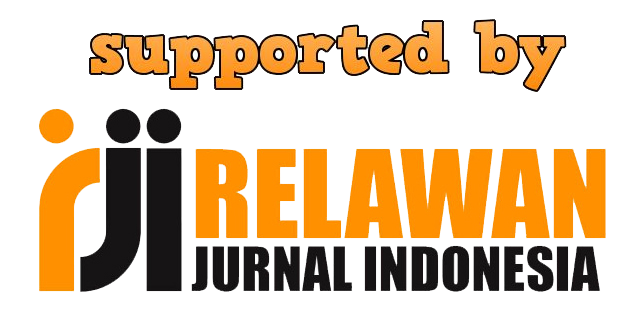Artificial Intelligence and the Future of Work in the Indonesian Public Sector
DOI:
https://doi.org/10.23887/jish.v12i2.62297Keywords:
Artificial Intelligence, Public Sector, Future of WorkAbstract
This study explores the adoption of Artificial Intelligence (AI) in the public sector, particularly how AI adoption affects employment and the future of work. The questions are what the correlation between AI and the future of work is and how the Indonesian government has developed strategies to adopt AI in the public sector. We sought data from various sources and found Indonesia’s National Strategy on AI, published by the National Research and Innovation Agency (BRIN), to be the most relevant. We reviewed and discussed the paper by cross-referencing with the emerging studies on AI in the global context. We found a strong link between AI adoption and changing employment structure, which requires skills upgrades and human resource deployment restructure. Looking into the sectors more closely, we argue that AI adoption will dramatically change the nature of work and employment structure in healthcare and bureaucracy but will only moderately affect education, food security, mobility, and smart cities.
References
Ashwini, B. P., S., R. M., & Sumathi, R. (2022). Artificial Intelligence in Smart City Applications: An overview. 2022 6th International Conference on Intelligent Computing and Control Systems (ICICCS), 986–993. https://doi.org/10.1109/ICICCS53718.2022.9788152
Aalst, W. M. P. Van Der, Bichler, M., & Heinzl, A. (2018). Robotic Process Automation. Business & Information Systems Engineering, 60(4), 269–272. https://doi.org/10.1007/s12599-018-0542-4
Accenture. (2019). Transforming Public Service with AI: A GovTech Ecosystem Approach.
Acemoglu, D., & Autor, D. (2011). Skills, tasks and technologies: Implications for employment and earnings. Handbook of Labor Economics, 4(PART B), 1043–1171. https://doi.org/10.1016/S0169-7218(11)02410-5
Acemoglu, D., Autor, D., Hazell, J., & Restrepo, P. (2022). Artificial Intelligence and Jobs: Evidence from Online Vacancies. Journal of Labor Economics, 40(April 2022), S293–S340. https://doi.org/https:// doi.org/10.1086/718327
Acemoglu, D., & Restrepo, P. (2018). The race between man and machine: Implications of technology for growth, factor shares, and employment. American Economic Review, 108(6), 1488–1542. https://doi.org/10.1257/aer.20160696
Acemoglu, D., & Restrepo, P. (2020). Robots and Jobs: Evidence from US Labor Markets. Journal of Political Economy, 128(6), 2188–2244. https://doi.org/10.1086/705716
Agarwal, P. K. (2018). Public Administration Challenges in the World of AI and Bots. Public Administration Review, 78(6), 917–921. https://doi.org/10.1111/puar.12979
Ali, O., Abdelbaki, W., Shrestha, A., Elbasi, E., Alryalat, M. A. A., & Dwivedi, Y. K. (2023). A systematic literature review of artificial intelligence in the healthcare sector: Benefits, challenges, methodologies, and functionalities. Journal of Innovation and Knowledge, 8(1). https://doi.org/10.1016/j.jik.2023.100333
Allam, Z., & Dhunny, Z. A. (2019). On big data, artificial intelligence and smart cities. Cities, 89(November 2018), 80–91. https://doi.org/10.1016/j.cities.2019.01.032
Apriyani, N., & Jannah, L. M. (2022). Manifestations of Bureaucratic Reform through the Electronic Service Manuscript System : A SWOT Analysis at the Directorate General of Vocational Education. Journal of Governance and Public Policy, 9(3), 195–210. https://doi.org/10.18196/jgpp.v9i3.14298
Asia Society Policy Institute. (n.d.). Indonesia Artificial Intelligence. Asia Society Policy Institute. Retrieved December 8, 2022, from https://asiasociety.org/policy-institute/raising-standards-data-ai-southeast-asia/ai/indonesia
BPPT. (2020). Strategi Nasional Kecerdasan Artifisial Indonesia 2020 - 2045. In Badan Pengkajian dan Penerapan Teknologi.
Bullock, J. B. (2019). Artificial Intelligence, Discretion, and Bureaucracy. American Review of Public Administration, 49(7), 751–761. https://doi.org/10.1177/0275074019856123
Chen, L., Chen, P., & Lin, Z. (2020). Artificial Intelligence in Education : A Review. IEEE Access, 8. https://doi.org/10.1109/ACCESS.2020.2988510
Chen, T., Guo, W., Gao, X., & Liang, Z. (2021). AI-based self-service technology in public service delivery: User experience and influencing factors. Government Information Quarterly, 38(4), 101520. https://doi.org/10.1016/j.giq.2020.101520
Chen, X., Xie, H., Zou, D., & Hwang, G. J. (2020). Application and theory gaps during the rise of Artificial Intelligence in Education. Computers and Education: Artificial Intelligence, 1(August), 100002. https://doi.org/10.1016/j.caeai.2020.100002
Chen, X., Zou, D., Xie, H., Cheng, G., Liu, C., Chen, X., Zou, D., Xie, H., Cheng, G., & Liu, C. (2022). International Forum of Educational Technology & Society Two Decades of Artificial Intelligence in Education Published by : International Forum of Educational Technology & Society Linked references are available on JSTOR for this article : Two Decades of A. 25(1), 28–47.
China AI Strategy. (2017). New Generation AI Development Plan.
Chui, K. T., Lytras, M. D., & Visvizi, A. (2018). Energy Sustainability in Smart Cities: Artificial Intelligence, Smart Monitoring, and Optimization of Energy Consumption. Energies, 11(11), 1–20. https://doi.org/10.3390/en11112869
Davenport, T., & Kalakota, R. (2019). The Potential for Artificial Intelligence in Healthcare. Future Healthc Journal, 6(2), 94–98. https://doi.org/10.2139/ssrn.3525037
Deming, D. J., & Noray, K. (2020). Earnings Dynamics, Changing Job Skills, and STEM Careers. Earnings Dynamics, Changing Job Skills, and STEM Careers, 135(4), 1965–2005. https://doi.org/https://doi.org/10.1093/qje/qjaa021
Desouza, K. C., Dawson, G. S., & Chenok, D. (2020). Designing, developing, and deploying artificial intelligence systems: Lessons from and for the public sector. Business Horizons, 63(2), 205–213. https://doi.org/10.1016/j.bushor.2019.11.004
Directorate General of Higher Education. (2020). Higher Education Statistic 2020. Sekreatris Direktorat Jenderal Pendidikan Tinggi.
Dwivedi, Y. K., Hughes, L., Ismagilova, E., Aarts, G., Coombs, C., Crick, T., Duan, Y., Dwivedi, R., Edwards, J., Eirug, A., Galanos, V., Ilavarasan, P. V., Janssen, M., Jones, P., Kar, A. K., Kizgin, H., Kronemann, B., Lal, B., Lucini, B., … Williams, M. D. (2021). Artificial Intelligence (AI): Multidisciplinary perspectives on emerging challenges, opportunities, and agenda for research, practice and policy. International Journal of Information Management, 57(August 2019), 101994. https://doi.org/10.1016/j.ijinfomgt.2019.08.002
EDBI, & Kearney. (2020). Artificial intelligence could deliver a US$1 trillion uplift to Southeast Asia’s GDP by 2030. https://edbi.com/news/artificial-intelligence-could-deliver-a-us1-trillion-uplift-to-southeast-asias-gdp-by-2030/
Edwards, B. I., & Cheok, A. D. (2018). Why Not Robot Teachers: Artificial Intelligence for Addressing Teacher Shortage. Applied Artificial Intelligence, 32(4), 345–360. https://doi.org/10.1080/08839514.2018.1464286
Edwards, C., Edwards, A., Spence, P. R., & Lin, X. (2018). I, teacher: using artificial intelligence (AI) and social robots in communication and instruction*. Communication Education, 67(4), 473–480. https://doi.org/10.1080/03634523.2018.1502459
Eloksari, E. A. (2020). AI to bring in $366b to Indonesia’s GDP by 2030. The Jakarta Post. https://www.thejakartapost.com/news/2020/10/09/ai-to-bring-in-366b-to-indonesias-gdp-by-2030.html
Fatima, S., Desouza, K. C., & Dawson, G. S. (2020). National strategic artificial intelligence plans: A multi-dimensional analysis. Economic Analysis and Policy, 67, 178–194. https://doi.org/10.1016/j.eap.2020.07.008
Ford, M. (2015). Rise of The Robots. In Basic Books. https://doi.org/10.1049/tpe.1988.0044
Frey, C. B., & Osborne, M. A. (2017). The future of employment: How susceptible are jobs to computerisation? Technological Forecasting and Social Change, 114, 254–280. https://doi.org/10.1016/j.techfore.2016.08.019
Gesk, T. S., & Leyer, M. (2022). Artificial intelligence in public services: When and why citizens accept its usage. Government Information Quarterly, 39(3), 101704. https://doi.org/10.1016/j.giq.2022.101704
Gill, I. (2020). Whoever leads in artificial intelligence in 2030 will rule the world until 2100. Brookings. https://www.brookings.edu/blog/future-development/2020/01/17/whoever-leads-in-artificial-intelligence-in-2030-will-rule-the-world-until-2100/
Goralski, M. A., & Tan, T. K. (2020). Artificial intelligence and sustainable development. International Journal of Management Education, 18(1). https://doi.org/10.1016/j.ijme.2019.100330
Haenlein, M., & Kaplan, A. (2019). A Brief History of Artificial Intelligence: 5–14. https://doi.org/10.1177/0008125619864925
Hani, A. (2021). Indonesia Deploys Artificial Intelligence to Accelerate Economy and Digital Transformation. OpenGov Asia. https://opengovasia.com/indonesia-deploys-artificial-intelligence-to-accelerate-economy-and-digital-transformation/
Hazarika, I. (2020). Artificial intelligence: Opportunities and implications for the health workforce. International Health, 12(4), 241–245. https://doi.org/10.1093/INTHEALTH/IHAA007
HolonIQ. (2020). 50 National AI Strategies - The 2020 AI Strategy Landscape. HolonIQ. https://www.holoniq.com/notes/50-national-ai-strategies-the-2020-ai-strategy-landscape
How, M., Chan, Y. J., & Cheah, S.-M. (2020). Predictive Insights for Improving the Resilience of Global Food Security Using Artificial Intelligence. Sustainability, 12(15), 6272. https://doi.org/https://doi.org/10.3390/su12156272
IDC. (2022a). Asia/Pacific* Artificial Intelligence Spending to Reach $32 Billion in 2025, Says IDC. https://www.idc.com/getdoc.jsp?containerId=prAP49010122
IDC. (2022b). IDC: AI Spending Will Rise Over $46 Billion by 2026 in Asia/Pacific. International Data Corporation. https://www.idc.com/getdoc.jsp?containerId=prAP49721022
IDC. (2022c). Worldwide Spending on AI-Centric Systems Will Pass $300 Billion by 2026, According to IDC. International Data Corporation. https://www.idc.com/getdoc.jsp?containerId=prUS49670322
Jayani, D. H. (2022). 52% Guru di Indonesia Berstatus PNS. Databoks Katadata Media Network. https://databoks.katadata.co.id/datapublish/2022/01/12/52-guru-di-indonesia-berstatus-pns#:~:text=Kementerian Pendidikan dan Kebudayaan (Kemenkdibud,guru di Indonesia berstatus PNS.
Kudashkina, K., Corradini, M. G., Thirunathan, P., Yada, R. Y., & Fraser, E. D. G. (2022). Artificial Intelligence technology in food safety: A behavioral approach. Trends in Food Science and Technology, 123(February), 376–381. https://doi.org/10.1016/j.tifs.2022.03.021
Makasi, T., Nili, A., Desouza, K. C., & Tate, M. (2022). A Typology of Chatbots in Public Service Delivery. IEEE Software, 39(3), 58–66. https://doi.org/10.1109/MS.2021.3073674
McKinsey Global Institute. (2017). Jobs lost, jobs gained: Workforce transitions in a time of automation. In McKinsey Global Institute (Issue December).
McKinsey Global Institute. (2018). Notes from the AI frontier: Modeling the impact of AI on the world economy. In McKinsey Global Institute (Issue September).
Mehr, H. (2017). Artificial Intelligence for Citizen Services and Government. Harvard Ash Center Technology & Democracy, August, 1–16.
Misuraca, G., & van Noordt, C. (2020). Overview of the use and impact of AI in public services in the EU. In EU Science Hub. https://doi.org/10.2760/039619
Müller, V. C., & Bostrom, N. (2016). Future Progress in Artificial Intelligence: A Survey of Expert Opinion. Fundamental Issues of Artificial Intelligence Pp 555–572, 376.
Newman, J. C. (2020). Decision Points in AI Governance. In Center for Long-Term Cybersecurity (CLTC) White Paper Series.
Newman, J., Mintrom, M., & O’Neill, D. (2022). Digital technologies, artificial intelligence, and bureaucratic transformation. Futures, 136(December 2021), 102886. https://doi.org/10.1016/j.futures.2021.102886
OECD. (2023). OECD Employment Outlook 2023. https://doi.org/https://doi.org/https://doi.org/10.1787/08785bba-en
Ouyang, F., & Jiao, P. (2021). Artificial intelligence in education: The three paradigms. Computers and Education: Artificial Intelligence, 2(March). https://doi.org/10.1016/j.caeai.2021.100020
Pappas, I. O., Mikalef, P., Giannakos, M. N., Krogstie, J., & Lekakos, G. (2018). towards digital transformation and sustainable societies. Information Systems and E-Business Management, 16(3), 479–491. https://doi.org/10.1007/s10257-018-0377-z
Radnor, Z., & Osborne, S. P. (2013). Lean: A failed theory for public services? Public Management Review, 15(2), 265–287. https://doi.org/10.1080/14719037.2012.748820
Rjab, A. Ben, Mellouli, S., & Corbett, J. (2023). Barriers to artificial intelligence adoption in smart cities: A systematic literature review and research agenda. Government Information Quarterly, 40(3), 101814. https://doi.org/10.1016/j.giq.2023.101814
Rong, G., Mendez, A., Bou Assi, E., Zhao, B., & Sawan, M. (2020). Artificial Intelligence in Healthcare: Review and Prediction Case Studies. Engineering, 6(3), 291–301. https://doi.org/10.1016/j.eng.2019.08.015
Schaefer, C., Lemmer, K., Kret, K. S., Ylinen, M., Mikalef, P., & Niehaves, B. (2021). Truth or dare? - How can we influence the adoption of artificial intelligence in municipalities? Proceedings of the Annual Hawaii International Conference on System Sciences, 2020-Janua, 2347–2356. https://doi.org/10.24251/hicss.2021.286
Secinaro, S., Calandra, D., Secinaro, A., Muthurangu, V., & Biancone, P. (2021). The role of artificial intelligence in healthcare: a structured literature review. BMC Medical Informatics and Decision Making, 21(1), 1–23. https://doi.org/10.1186/s12911-021-01488-9
Sigelman, M., Taska, B., O’kane, L., Nitschke, J., Strack, R., Baier, J., Breitling, F., & Kotsis, Á. (2022). Shifting Skills, Moving Targets, and Remaking the Workforce. May.
Sousa, W. G. de, Melo, E. R. P. de, Bermejo, P. H. D. S., Farias, R. A. S., & Gomes, A. O. (2019). How and where is artificial intelligence in the public sector going? A literature review and research agenda. Government Information Quarterly, 36(4), 101392. https://doi.org/10.1016/j.giq.2019.07.004
Spanaki, K., Karafili, E., Sivarajah, U., Despoudi, S., & Irani, Z. (2022). Artificial intelligence and food security: swarm intelligence of AgriTech drones for smart AgriFood operations. Production Planning and Control, 33(16), 1498–1516. https://doi.org/10.1080/09537287.2021.1882688
Sun, T. Q., & Medaglia, R. (2019). Mapping the challenges of Artificial Intelligence in the public sector: Evidence from public healthcare. Government Information Quarterly, 36(2), 368–383. https://doi.org/10.1016/j.giq.2018.09.008
Syed, R., Suriadi, S., Adams, M., Bandara, W., Leemans, S. J. J., Ouyang, C., Arthur, H. M., Weerd, I. Van De, Thandar, M., & Reijers, H. A. (2020). Computers in Industry Robotic Process Automation : Contemporary themes and challenges. Computers in Industry, 115, 103162. https://doi.org/10.1016/j.compind.2019.103162
Tegmark, M. (2017). Life 3.0 Being Human in the Age of Artificial Intelligence.
The Economist Group. (2022). Global Food Security Index (GFSI). In The Economist Intelligence Unit.
UK AI Strategy. (2021). National AI Strategy.
Ullah, Z., Al-turjman, F., Mostarda, L., & Gagliardi, R. (2020). Applications of Artificial Intelligence and Machine learning in smart cities. Computer Communications, 154(December 2019), 313–323. https://doi.org/10.1016/j.comcom.2020.02.069
Valle-Cruz, D., Criado, J. I., Sandoval-Almazán, R., & Ruvalcaba-Gomez, E. A. (2020). Assessing the public policy-cycle framework in the age of artificial intelligence: From agenda-setting to policy evaluation. Government Information Quarterly, 37(4), 101509. https://doi.org/10.1016/j.giq.2020.101509
van Noordt, C., & Misuraca, G. (2022). Artificial intelligence for the public sector: results of landscaping the use of AI in government across the European Union. Government Information Quarterly, 39(3), 101714. https://doi.org/10.1016/j.giq.2022.101714
Walz, A., & Firth-Butterfield, K. (2019). IMPLEMENTING ETHICS INTO ARTIFICIAL INTELLIGENCE : A CONTRIBUTION , FROM A LEGAL PERSPECTIVE , TO THE DEVELOPMENT OF AN AI GOVERNANCE REGIME. Duke Law and Technology Review, 18(1), 176.
West, D. M., & Allen, J. R. (2018). How artificial intelligence is transforming the world.
Wirajuda, T. (2021). President Jokowi Urges Indonesia to Accelerate AI Capabilities. Kompas. https://go.kompas.com/read/2021/03/09/062143674/president-jokowi-urges-indonesia-to-accelerate-ai-capabilities?page=all
Wirtz, B. W., & Müller, W. M. (2019). An integrated artificial intelligence framework for public management. Public Management Review, 21(7), 1076–1100. https://doi.org/10.1080/14719037.2018.1549268
Wirtz, B. W., Weyerer, J. C., & Sturm, B. J. (2020). The Dark Sides of Artificial Intelligence: An Integrated AI Governance Framework for Public Administration. International Journal of Public Administration, 43(9), 818–829. https://doi.org/10.1080/01900692.2020.1749851
Yigitcanlar, T., & Cugurullo, F. (2020). The sustainability of artificial intelligence: an urbanistic viewpoint from the lens of smart and sustainable cities. Sustainability (Switzerland), 12(20), 1–24. https://doi.org/10.3390/su12208548
Yigitcanlar, T., Desouza, K. C., Butler, L., & Roozkhosh, F. (2020). Contributions and risks of artificial intelligence (AI) in building smarter cities: Insights from a systematic review of the literature. Energies, 13(6). https://doi.org/10.3390/en13061473
Yu, Z., Liang, Z., & Xue, L. (2022). A data-driven global innovation system approach and the rise of China’s artificial intelligence industry. Regional Studies, 56(4), 619–629. https://doi.org/10.1080/00343404.2021.1954610
Zhang, Y., Geng, P., Sivaparthipan, C. B., & Muthu, B. A. (2021). Big data and artificial intelligence based early risk warning system of fire hazard for smart cities. Sustainable Energy Technologies and Assessments, 45(March), 100986. https://doi.org/10.1016/j.seta.2020.100986
Zhou, Q., Zhang, H., & Wang, S. (2022). Artificial intelligence, big data, and blockchain in food safety. International Journal of Food Engineering, 18(1), 1–14. https://doi.org/10.1515/ijfe-2021-0299
Downloads
Published
Issue
Section
License
Copyright (c) 2023 Ferry Silitonga, M Falikul Isbah

This work is licensed under a Creative Commons Attribution-ShareAlike 4.0 International License.
Authors who publish with the Jurnal Ilmu Sosial dan Humaniora agree to the following terms:
- Authors retain copyright and grant the journal the right of first publication with the work simultaneously licensed under a Creative Commons Attribution License (CC BY-SA 4.0) that allows others to share the work with an acknowledgment of the work's authorship and initial publication in this journal.
- Authors are able to enter into separate, additional contractual arrangements for the non-exclusive distribution of the journal's published version of the work (e.g., post it to an institutional repository or publish it in a book), with an acknowledgment of its initial publication in this journal.
- Authors are permitted and encouraged to post their work online (e.g., in institutional repositories or on their website) prior to and during the submission process, as it can lead to productive exchanges, as well as earlier and greater citation of published work. (See The Effect of Open Access)


.png)
.png)













